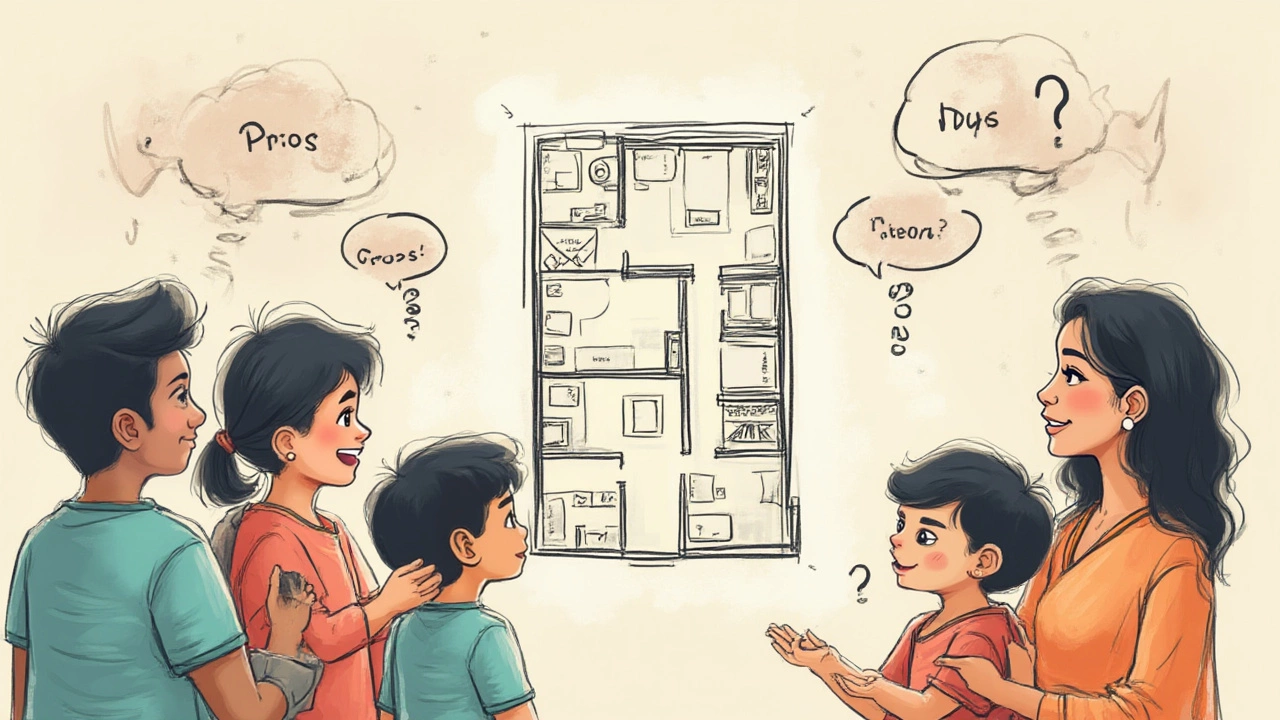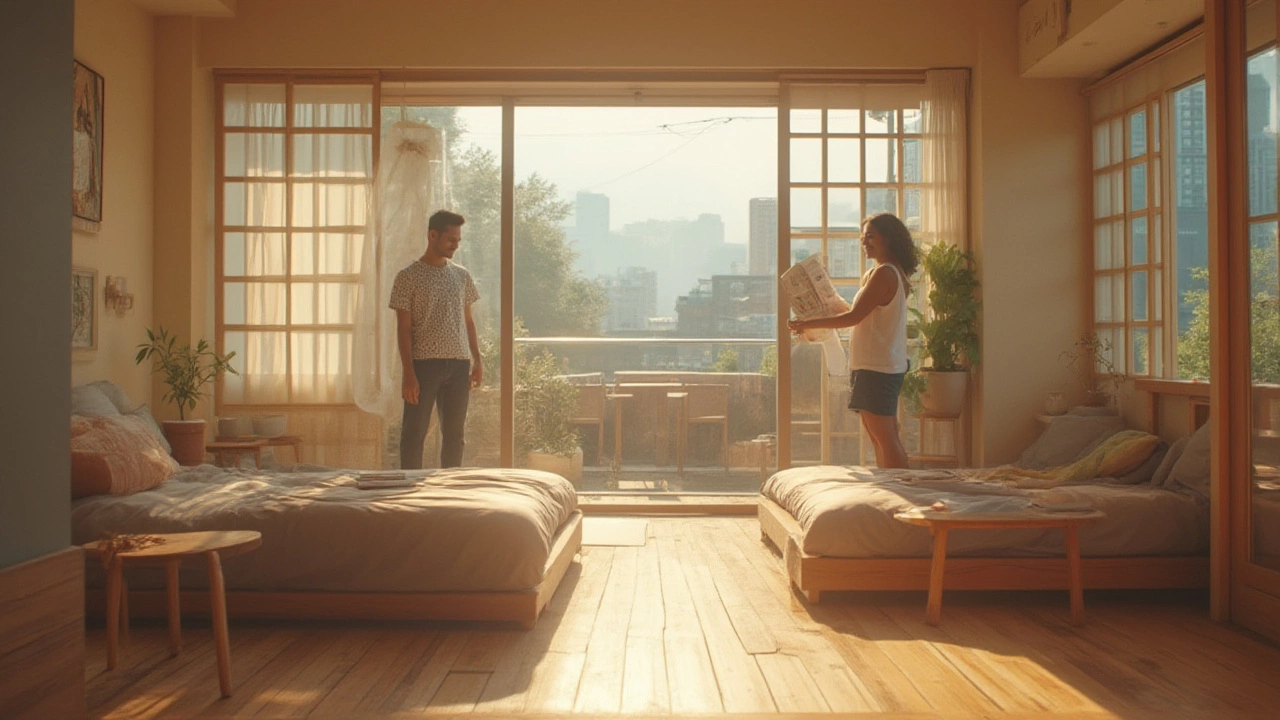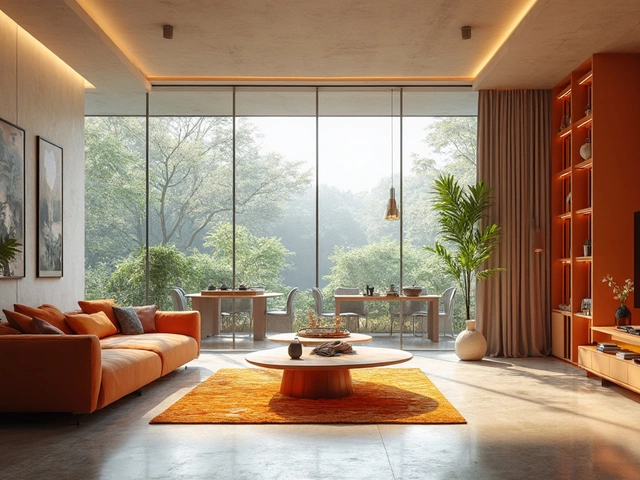Ever glanced at Japanese apartment listings and felt like you were deciphering some secret code? You stumble on stuff like "2DK" or "1LDK," and unless you grew up learning rental acronyms at kindergarten, you're probably lost. Take a seat—because 2DKs are a big deal in Japan, and knowing what they really mean can save you hours of confusion, not to mention help you dodge signing a lease on something that’ll drive you up the wall.
Breaking Down the 2DK Mystery: Not Just a Bunch of Letters
First, the term 2DK isn’t some marketing gimmick, it’s actually pretty specific. In Japanese real estate lingo, 2 = two rooms, D = dining, and K = kitchen. So a 2DK apartment has two (often small) separate rooms, plus one combined dining space and kitchen. No, the two rooms aren’t bathrooms, closets, or balconies. These are rooms you can actually sleep, work, or binge-watch in (or hide from your kids, like my daughter Elara, when you need three minutes of peace). The dining-kitchen hotspot? That’s typically one open zone, often separated from the rooms by sliding or regular doors.
Here’s the important bit: In many apartments, “two rooms” isn’t the same as “two bedrooms.” Sometimes, one is a tatami-matted room, while the other might resemble a Western-style bedroom. So don’t picture two sprawling American beds—it’s more of a cozy-flex-y space thing. You customize the function: bedroom, living area, workspace, or playroom. Some units let you slide doors to combine areas. The magic of a 2DK is its flexibility. I’ve seen friends use one room as a kid’s space and the other as a living room, while some couples combine the two and use the main area for entertaining.
Here’s a little fun fact: Japanese apartments are usually measured in tatami mats (jo or 畳). A 6-jo room means it can fit six standard tatami mats. Most 2DKs clock in at about 40 to 50 square meters (about 430 to 540 square feet). Bonus detail: In 1997, nearly 25% of all new Japanese apartments built were 2DKs, according to the Ministry of Land, Infrastructure, Transport and Tourism. Today, as family sizes change, 1LDK and 2LDK layouts are also trendy, but 2DK remains a go-to for singles, couples, and small families who value an extra room for storage, hobbies, or privacy.
Here’s a quick comparison table to help you see the differences:
| Type | Rooms | Dining/Kitchen/Living | Average Size (sqm) |
|---|---|---|---|
| 1K | 1 | Kitchen (separate) | 20-30 |
| 1DK | 1 | Dining/Kitchen (combined) | 25-35 |
| 2DK | 2 | Dining/Kitchen (combined) | 40-50 |
| 2LDK | 2 | Living/Dining/Kitchen (combined) | 50-70 |
Some units toss in extras like a balcony (veranda), which is awesome for laundry or that tiny tomato plant you swear you won’t let die this time. Bathrooms are often split: a "unit bath" with shower and tub, and a separate toilet room. In smaller city units, don’t be surprised if the kitchen is basically two burners, a sink, and a counter you can barely fit a rice cooker on.

Who Should Consider a 2DK? Real-Life Scenarios, Pros, and Cons
Not every apartment fits every lifestyle, so if you’re eyeing a 2DK, think about your daily life. Is extra privacy a must? Got a toddler who needs a playroom? Want to keep your hobbies out of your sleep space? A 2DK offers you more than a cramped studio or a basic one-room (1K). Couples love the flexibility: one partner can read at night while the other snoozes in the next room, which, trust me, is marital gold. If you work from home, that second room can be your office, or in my case, Dad’s Fortress of Solitude.
For families, two rooms mean the world. When Elara was three, she needed afternoon naps. I’d retreat to the other room to take calls (sometimes in a whisper), so no one’s day exploded. For singles who don’t want to live like college students forever, having a place to store snowboards or set up a gaming rig away from your sleeping spot? Game changer.
But it’s not all pluses. The kitchen/dining space isn’t huge. If you dream of a full breakfast bar and a giant fridge, you’ll probably have to lower expectations or get creative. The cost is usually higher than a one-room, naturally, and in city centers like Tokyo, rent can spike hard for a modest 2DK. Some 2DKs are in older buildings, which means the insulation, plumbing, or even earthquake-proofing could be less than ideal. Always check the year built—a common pitfall for newbies. Buildings made after 1981 follow tougher, safer building codes after big earthquakes in the late 1970s.
One hot tip: If you like hosting friends or need a home office, hunt for layouts where the two rooms don’t just open to the kitchen but have windows facing different sides. This is called wariate (割当)—the more window sides, the better the airflow and light. Ventilation sounds boring, but in an August Tokyo heatwave, you’ll thank me.

How to Find, Evaluate, and Make the Most of a 2DK
When hunting for a 2DK online, sort by floor plan and check photos—don’t trust floor diagrams alone. Japanese websites like SUUMO or HOME’S have floor plans and 3D tours. Real photos reveal what the lighting, counter space, and storage actually look like. Some 2DKs sneakily count a dining/kitchen area as a legit living space, so double-check the dimensions. If you’re tall, measure door heights or kitchen counter levels; Japan likes compact everything.
Don’t forget noise—many 2DKs are in buildings with thin walls. On the first tour, try clapping your hands in the rooms. You’ll know fast if you’re about to hear your neighbor’s every sneeze. Also, during viewing, peek in closets, under sinks, and at window frames for mold or water damage—humid Japanese summers can be rough on older apartments. If you plan to work regularly from home, check for enough outlets and wired internet connections; some buildings only offer older fiber or cable plugs.
To boost comfort, invest in smart, flexible furniture. Folding beds or futons make it easy to convert a playroom into a guest room. Stackable storage boxes slide under tatami mats or in closets—no wasted centimeters. Portable induction burners can boost a tiny kitchen instantly. Consider shoji screens (stylish sliding paper doors) for extra privacy within rooms. And don’t be afraid to ask your landlord about painting or minor upgrades; many now let you customize as long as you restore things before leaving.
Here’s a sample cost breakdown for Tokyo in 2025:
| Area | Average 2DK Size (sqm) | Monthly Rent (Yen) | Initial Move-In/Deposit (Yen) |
|---|---|---|---|
| Central Tokyo | 40 | 120,000 - 180,000 | 300,000 - 500,000 |
| Chiyoda or Minato Wards | 45 | 160,000 - 230,000 | 400,000 - 650,000 |
| Suburban Tokyo | 50 | 70,000 - 120,000 | 200,000 - 400,000 |
| Osaka (Central) | 42 | 95,000 - 120,000 | 250,000 - 450,000 |
Prices range widely based on location, amenities, and whether you’re snagging a unit in a newer or older building. Don’t let the upfront costs freak you out. Some companies now offer “no key money” (reikin) or cheaper agency fees for foreigners, and utilities average 10,000-20,000 yen monthly for this size if you don’t run the air conditioner 24/7. Negotiate where you can, especially if a place has been empty longer or you’re signing a two-year lease.
One last pro tip: Japanese real estate moves fast, especially near train stations. Bookmark listings, contact the agent ASAP, and be ready with ID and proof of income. If you do bag a great 2DK, show it off—you’ll find it’s a strong conversation starter. Japanese friends will almost always ask, “So, how many mats is your biggest room?” which, weirdly, beats the old “what’s your rent?” back in my home country.
If you’re looking for a flexible space that gives you options, the 2DK is worth checking out. It’s a classic for a reason.





